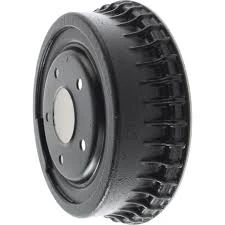
-
 Afrikaans
Afrikaans -
 Albanian
Albanian -
 Amharic
Amharic -
 Arabic
Arabic -
 Armenian
Armenian -
 Azerbaijani
Azerbaijani -
 Basque
Basque -
 Belarusian
Belarusian -
 Bengali
Bengali -
 Bosnian
Bosnian -
 Bulgarian
Bulgarian -
 Catalan
Catalan -
 Cebuano
Cebuano -
 Corsican
Corsican -
 Croatian
Croatian -
 Czech
Czech -
 Danish
Danish -
 Dutch
Dutch -
 English
English -
 Esperanto
Esperanto -
 Estonian
Estonian -
 Finnish
Finnish -
 French
French -
 Frisian
Frisian -
 Galician
Galician -
 Georgian
Georgian -
 German
German -
 Greek
Greek -
 Gujarati
Gujarati -
 Haitian Creole
Haitian Creole -
 hausa
hausa -
 hawaiian
hawaiian -
 Hebrew
Hebrew -
 Hindi
Hindi -
 Miao
Miao -
 Hungarian
Hungarian -
 Icelandic
Icelandic -
 igbo
igbo -
 Indonesian
Indonesian -
 irish
irish -
 Italian
Italian -
 Japanese
Japanese -
 Javanese
Javanese -
 Kannada
Kannada -
 kazakh
kazakh -
 Khmer
Khmer -
 Rwandese
Rwandese -
 Korean
Korean -
 Kurdish
Kurdish -
 Kyrgyz
Kyrgyz -
 Lao
Lao -
 Latin
Latin -
 Latvian
Latvian -
 Lithuanian
Lithuanian -
 Luxembourgish
Luxembourgish -
 Macedonian
Macedonian -
 Malgashi
Malgashi -
 Malay
Malay -
 Malayalam
Malayalam -
 Maltese
Maltese -
 Maori
Maori -
 Marathi
Marathi -
 Mongolian
Mongolian -
 Myanmar
Myanmar -
 Nepali
Nepali -
 Norwegian
Norwegian -
 Norwegian
Norwegian -
 Occitan
Occitan -
 Pashto
Pashto -
 Persian
Persian -
 Polish
Polish -
 Portuguese
Portuguese -
 Punjabi
Punjabi -
 Romanian
Romanian -
 Russian
Russian -
 Samoan
Samoan -
 Scottish Gaelic
Scottish Gaelic -
 Serbian
Serbian -
 Sesotho
Sesotho -
 Shona
Shona -
 Sindhi
Sindhi -
 Sinhala
Sinhala -
 Slovak
Slovak -
 Slovenian
Slovenian -
 Somali
Somali -
 Spanish
Spanish -
 Sundanese
Sundanese -
 Swahili
Swahili -
 Swedish
Swedish -
 Tagalog
Tagalog -
 Tajik
Tajik -
 Tamil
Tamil -
 Tatar
Tatar -
 Telugu
Telugu -
 Thai
Thai -
 Turkish
Turkish -
 Turkmen
Turkmen -
 Ukrainian
Ukrainian -
 Urdu
Urdu -
 Uighur
Uighur -
 Uzbek
Uzbek -
 Vietnamese
Vietnamese -
 Welsh
Welsh -
 Bantu
Bantu -
 Yiddish
Yiddish -
 Yoruba
Yoruba -
 Zulu
Zulu
semi brake drums weight
Understanding Semi Brake Drums Weight
In the realm of heavy-duty vehicles, particularly semi-trucks, the importance of braking systems cannot be overstated. Among the vital components that play a crucial role in ensuring safety and performance are the brake drums. Specifically, the weight of semi brake drums is a significant factor that impacts both the vehicle’s overall performance and operational efficiency.
What are Semi Brake Drums?
Semi brake drums are cylindrical devices attached to a vehicle's wheel hub that serve as a housing for the braking mechanism. When the driver applies the brakes, brake shoes expand against the inner surface of the drum to create friction, which slows down or stops the vehicle. The design and material of these brake drums are engineered to withstand high levels of heat and stress, as they are vital for effective braking in heavy-duty applications.
Weight Considerations
The weight of semi brake drums can vary significantly based on materials used, design specifications, and the intended application. On average, a single semi brake drum can weigh between 40 to 70 pounds. This weight is a critical consideration for fleet operators and vehicle manufacturers for several reasons.
1. Impact on Vehicle Weight The total weight of a semi-truck is crucial for determining its payload capacity. Every component contributes to the gross vehicle weight rating (GVWR). A heavier brake drum might mean sacrificing payload capacity, a significant factor for operators who aim to maximize efficiency and profits.
2. Fuel Efficiency The weight of the braking system directly impacts fuel efficiency. Heavier vehicles require more energy to move, which can lead to increased fuel consumption. Consequently, lighter brake drums may help improve fuel efficiency, contributing to lower operating costs over time.
semi brake drums weight

3. Brake Performance The weight of the brake drum is also linked to its performance. A heavier drum can provide a larger surface area for heat dissipation, which is essential during prolonged braking scenarios. However, advancements in materials and engineering have led to the development of lighter, yet equally efficient, brake drum designs that maintain performance without the added weight.
4. Material Innovations Traditionally, semi brake drums were made from cast iron, known for its durability and ability to withstand high temperatures. However, newer materials such as aluminum and composite materials are being explored due to their lighter weight and corrosion resistance. These innovations not only reduce the overall weight of the drum but also improve longevity and performance, especially in harsh operating conditions.
The Balancing Act
When selecting brake drums for semi-trucks, manufacturers and fleet operators often find themselves in a balancing act between weight, performance, and cost. While lighter brake drums can offer advantages in terms of payload capacity and fuel efficiency, ensuring that they meet safety standards and performance expectations is paramount.
Durability is another critical aspect. Semi-truck braking systems face significant challenges, including not just the weight of the vehicle but also the terrains they navigate. Brake drums must be resilient enough to handle heavy loads and frequent stops, especially on steep grades. Therefore, choosing the right weight and material becomes integral to maintaining the integrity of the braking system.
Conclusion
In conclusion, the weight of semi brake drums is an essential factor influencing the operational efficiency, safety, and performance of semi-trucks. As the industry evolves, material innovations and engineering advancements are paving the way for lighter yet robust brake drum designs. Fleet operators must be well-informed to make decisions that enhance their vehicles' efficiency without compromising safety. With the right balance, the future of heavy-duty braking systems looks promising, offering solutions that benefit both performance and profitability. As always, ongoing research and development will continue to drive improvements in this critical aspect of vehicle engineering.
-
What Are Drum BrakesNewsJul.07,2025
-
Understanding Brake Drum MaterialNewsJul.07,2025
-
Semi-Trailer Brake Drum: A Key Component for Extreme Loads and Long-Distance TransportNewsJul.07,2025
-
Drum Brake Pads for SaleNewsJul.07,2025
-
Brake Drums for SaleNewsJul.07,2025
-
Brake Drum ManufacturerNewsJul.07,2025
-
Aluminum Brake Drums: The Future of High-Performance CarsNewsJul.07,2025
